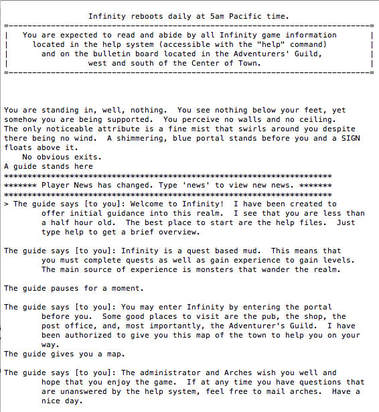 As social media users, we’re a fickle bunch. We like what we like, and we don’t want what we like to change. When platforms like Facebook or Snapchat modify their algorithms or interfaces, some of us run to the next favorite platform rather than adapt. That said, some of us willingly add new social media platforms to our expanding repertoire of sharing tools, while others will abandon old platforms for the next big thing – the new shiny social media toy. It seems like eons since we’ve been offered a true social media alternative to the big players such as Instagram, YouTube and Twitter. But now we might have a winner. Vero appears to be the newest contender on the social media market seeking and – by some accounts, receiving – our undivided attention. Vero bills itself as a relationship-first social network, focused on providing users with a unique platform to share content and interact with others, by mirroring real-world relationships in an online setting. The best part: it’s ad free. To be fair, Vero isn’t exactly “new.” In fact, the platform has been available since 2015. But user-generated publicity and recent media reports have breathed new life into a once floundering app, now making it one of the most talked-about platforms. Two weeks ago you wouldn’t have been able to find it on the Top 100 most downloaded app charts. Today, it’s ranked in the top 10 most downloaded apps on iOS and Android stores. For Vero, this is now a “good news, bad news” situation. The good news for Vero is that we’re starting to use their app. The bad news is that Vero is in beta format. Essentially this means they’re not ready for prime time. If you’re the type to be easily annoyed by the occasional crash and glitchy performance issues, this isn’t the app for you. Not yet. But the potential for something great sits in the user interface. Like other platforms, users can share text and links, endorse TV shows, movies, books and music, and post photos. Content appears in reverse-chronological order, and you can search posts through your connections or by hashtag. Vero claims to only collect basic user information - names, email addresses, phone numbers. Also, Vero states that it won’t sell your data to third parties, in part, because it’s an ad-free service. Inevitably, we gravitate toward new, enhanced platforms that meet our needs. We look for functional alternatives to old, brokendown services that do more to irritate us than connect us to the world. Vero might be that alternative. Vero is available on the iOS and Android app stores. If you like free stuff, check out Vero now before it’s too late. According to the app’s welcome email, the first one million people to download and subscribe will get free access to Vero for life.
0 Comments
 In the 1990s, I played an online, text-based, role-playing game called Infinity. The fantasy element intrigued me, and I liked pretending to be someone else. Infinity is a MUD, or multi-user domain, although other MUDders (MUD players) often refer to the “D” as dimension or dungeon. Just for kicks, I logged on to Infinity last week. The character I created in 1994 is gone, but I was happy to see that, after more than two decades, my favorite online fantasy world still exists. The opening dialogue is the same and sets the stage for adventure: You are standing in, well, nothing. You see nothing below your feet, yet somehow you are being supported. You perceive no walls and no ceiling. The only noticeable attribute is a fine mist that swirls around you despite there being no wind. A shimmering, blue portal stands before you and a sign floats above it. Cool, right? Okay, maybe not. But if this is indeed a “stage,” then Infinity is a theatrical production just as much as it is a text-based game. It’s like reading a never-ending, loosely-scripted book in which you’re the main character. Opening this portal is quickly followed by a series of choices – where to go, what to do, and how to describe your character, including name, gender and other descriptors. This last part – character development – is a very important feature in MUD play. Pseudonymity, or the process of creating fake identities for the purpose of living as someone else, is the hallmark of MUD play. “I like being somebody else, or in my case, something else, online,” a player (who asked not to be identified) told me in an online chat. “I know it’s not totally anonymous. If the NSA wants to find me, they probably could.” She went on to say that being this creature online gives her a break from “normal” life. “It’s either this or drugs,” she said with a smiley face. Infinity limits play to about 70 MUDders at a time, but it boasts a diverse group of players from all over the world, including Australia, Brazil, Canada, Germany, Italy, Japan, and the United States. After several months of play, my “real life” friend received an invitation to an Infinity “gathering” in Boston. It seemed odd that a group of people who lived online would want to meet face-to-face. But “Okay,” I thought. “I like a good party.” Our gathering showed me what I expected. The personalities I saw on display in real life were a vast departure from the personas I interacted with online. Still, I believe this kind of “play” is a good thing at any age. Escape from our everyday lives for a few moments in a safe environment is something we all need, and maybe even more so today than we did 20 years ago.  Shelby Kelly, Ultimate Dallas Cowboys Fan Shelby Kelly, Ultimate Dallas Cowboys Fan Shelby Kelly lives in Texas and she’s an integral part of the Dallas Cowboys organization. She has influence over player performance, team success, and fan engagement. But don’t look for her name on the official roster of Cowboy coaches or team administrators. Cowboys owner Jerry Jones has yet to cut her a check for her contributions to the franchise. In fact, the only way you’d know of Shelby’s influence over one of the most storied football teams would be through a closer examination of her years of loyalty to “America’s Team.” She was voted the Most Electrifying Cowboys Fan, inducted into the Pro Football Ultimate Fan Association (or PFUFA), and featured in the 2009 documentary “Ultimate Fan of the Fans” about the opening of the new Cowboys Stadium, now AT&T Stadium. Evidence of her dedication can also be found in the five-hour round trip she drives to and from home games in Dallas, and her impressive collection of player autographs, cards and memorabilia. I spent the day with Shelby and her husband, Chuck, at their home. I dare anyone to spend the day with them at their home and not leave feeling at least a little love (or at least respect) for the Cowboys. That’s saying a lot coming from a lifelong Steelers fan. Shelby is energized, in part, through her active presence on social media, where she regularly interacts with other fans. “I call it fan-powered,” Shelby said. “I’m fan-powered, and social media helps that. I’m able to connect with other fans because of social media, and I wouldn’t be able to do any of the things I do as a fan without them.” Shelby notes that even in the early days of social media, fans were using Twitter and Facebook as a way to connect. “I look back at that very first game we had at the new stadium, and I wanted it to be something really special for other fans,” Shelby said. “So I bombarded social media with plans for the weekend.” She talked about how she was able to organize groups for dinners, carpools and other events, like meeting players. “We met 28 players that weekend,” Shelby said. “We organized so much of that through social media. I would tell fans to ‘meet us here at this time,’ and I’d post maps and directions, and fans would just show up.” Like fans who met Shelby for the first time thanks to social media, Twitter served as our mode of introduction. We shared tweets about my interest in fans, and how she uses social media to cultivate Cowboys fan communities. Now she’s planning to introduce me to other Ultimate fans from other teams on social media and in person – further evidence of the power of social media to connect people who might otherwise never meet.  My wife and I are good at relationship maintenance. While navigating work and home schedules, managing four kids with active social lives, and unpacking the occasional argument, we have persevered with competent communication skills – one of the hallmarks of a successful marriage. However, when it comes to the use of text messaging for communicating, we often veer off course. Like most couples, when there’s a communication breakdown, I blame her and she blames me. Ironically, the blame game is usually played when we’re talking face-to-face. Last week I sent her (what I deemed) several “very important” texts over the course of a few hours, all random and all focused on different topics. She didn’t respond to any of them. Was it information overload? Was she ignoring me? Or was it something worse? Three hours later, she responded. “Wow, that’s a lot of texts.” She was right. “Yeah, sorry ’bout that,” I responded. Our texting habits are getting better and, more importantly, our relationship is intact. But other couples struggle with marriage maintenance via text messaging, to the point of break-ups and divorce, signaling deeper relational communication flaws. A friend once asked me (when referring to her boyfriend), “What happened to picking up the phone and talking?” Touche. Of course, there’s almost always an easier solution to these communication breakdowns, and it almost never involves texting. It feels like we’ve always known that talking about expectations leads to healthier relationships, but we sometimes avoid it, hoping things will get better on their own. We know that when we talk, problems often get resolved. The same is true for having a conversation with your partner about texting habits. If you’re a couple who argues about the lack of communication or miscommunication via text messaging, there’s evidence to suggest you’ll be happier if you talk about it now. A new study suggests that we actually get more satisfaction out of our relationship if we think our romantic partner has texting behaviors similar to ours. Jonathan Ohadi and fellow researchers at Pace University explored the use of text messaging for ongoing maintenance in romantic relationships. In the January issue of Computers In Human Behavior, Ohadi’s group explained that something as simple as perceiving similarity in how we text may lead to greater levels of satisfaction. Using a sample of 205 adults in romantic relationships, they also found that we tend to feel more satisfied if we think our partner is initiating contact with us more frequently (“I miss you”). Sending a quick, unexpected text to a partner has the potential to set off similar kinds of endorphins we feel when someone likes something we’ve posted online. Of course, initiating this contact is only a start. When all else fails, talk about how you text each other and set communication expectations for building a fulfilling relationship. |
AuthorDr. Adam C. Earnheardt is special assistant to the provost and professor of communication in the department of communication at Youngstown State University in Youngstown, OH, USA where he also directs the graduate program in professional communication. He researches and writes on a variety of topics including communication technologies, relationships, and sports (with an emphasis on fandom). His work has appeared in Mahoning Matters as well as The Vindicator and Tribune-Chronicle newspapers. CategoriesArchives
July 2023
|
 RSS Feed
RSS Feed